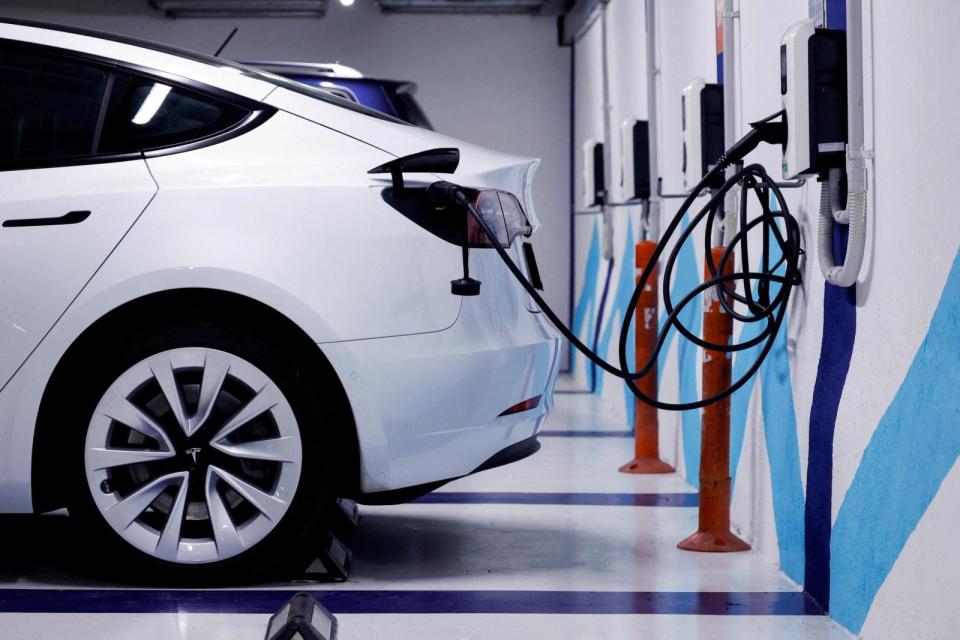China's EV makers look to Europe as 'main battleground'
The News
China’s homegrown electric-vehicle makers are increasingly dominating their fiercely competitive domestic market, the world’s largest for EVs. Now, they are setting their sights further afield. Their chosen battleground: Europe.
Xiaoying’s view
I saw the growing popularity of EVs in China on a recent trip to my hometown, Shanghai. On casual strolls through the streets, around one-third of the cars I spotted were battery EVs or plug-in hybrids, easily spotted thanks to their green license plates. All the buses I rode were electric, too. In shopping malls, prime retail real estate on the first floor — once reserved for luxury fashion brands — housed EV dealers. EVs are everywhere, and they are of incredibly high quality.
But the market is increasingly saturated and a massive price war has hammered margins. That, combined with a continued desire for growth, is pushing many carmakers to look abroad.
Europe offers strong sales growth, clear timelines to phase out fossil-fuel vehicles, generous consumer subsidies, and comparatively low import duties.
Chinese companies have so far gained a foothold on the continent by purchasing well-established local brands, such as Volvo from Sweden, bought by Zhejiang-based Geely, and MG from the U.K., now part of Shanghai-based SAIC. Yet the presence of Chinese homegrown brands is still tiny, making up 2% of European EV sales.
That could soon change: Many see Europe, the world’s second-largest EV market, as the “main battleground,” Michael Jiang, head of clients and markets for China at KPMG, told me.
Know More

For decades, the Chinese automotive industry relied on foreign know-how to develop vehicles powered by internal combustion engines — a technology dominated by the Americans, Germans, and Japanese. But the rapid surge of EVs opened a new opportunity that they seized.
Chinese EV makers now boast a big price advantage over their Western competitors because they develop and produce key components, such as batteries, at home and at huge scale. Strong internal supply chains also enable them to actively develop advanced technologies, such as batteries that charge faster or have longer driving ranges per charge, noted Andy Zhou, who leads Deloitte China’s automotive sector team.
The success of China’s most established EV maker, BYD, or Build Your Dreams, is a telling tale. The company started as a battery plant on the outskirts of Shenzhen in 1995 before growing into one of the world’s top battery manufacturers. After acquiring a Chinese car maker in 2003, BYD began making battery and hybrid cars. It had its first big break nine years later when the central government released a sweeping plan to spur the nascent industry with subsidies for developers and consumers.
Now, BYD — which counts Warren Buffett’s Berkshire Hathaway among its investors — sells models ranging in price from $100,000 to $150,000 in China and is listed in the Hong Kong and Shenzhen stock exchanges. It overtook Elon Musk’s Tesla to become the world’s biggest EV manufacturer by sales last year. In the second quarter of this year, it sold more than 700,000 vehicles, outpacing Tesla again, CNN reported.
The View From the US
Chinese EV makers have Europe higher on their priority lists than the United States for a few reasons. For one, whereas the EU and U.K. charge 10% levies on Chinese cars, the U.S. rate, imposed by former U.S. President Donald Trump during the trade war, is 27.5%.
Experts I spoke to also pointed to worsening geopolitical ties between China and the U.S. and what they called an American “market barrier”: The Inflation Reduction Act — much trumpeted for offering subsidies for EVs, among other clean tech — sets local-production requirements for companies to receive financial support, making it hard for any foreign-made cars, let alone Chinese ones, to compete.
The View From Thailand
Not all Chinese EV makers are looking towards Europe. Southeast Asia, especially Thailand, is another major overseas market for Chinese brands seeking to woo a mass audience, Phate Zhang, founder of CnEVPost, a Shanghai-based industry outlet, told me. Some manufacturers have also gone for the Middle East, he added.
Chinese firms are already building plants in Thailand, which aims to become an “EV hub” in the region. Hozon and Chang’an Automobile announced this year that they would be producing EVs in Thailand in a move that sees Chinese brands diversifying their supply chains.
Room for Disagreement
Europe may be an attractive market, but that doesn’t mean Chinese automakers will dominate it overnight, or at all. All the Chinese experts I spoke to noted that it could take Chinese EV makers time to establish brand recognition in Europe: “BYD is the best-selling homegrown Chinese brand in the European market, but it has only 0.3% of the market share,” KPMG’s Jiang noted.
The EU itself is also considering erecting barriers to prevent Chinese EVs from what it views as a threat to the continent’s automotive industry. Thierry Breton, the European Commissioner responsible for the bloc’s internal market, told Politico that he was “very much in favor of opening a dumping investigation into [Chinese] electric cars as soon as possible.”
Notable
China became a leader in the global EV industry before most of the world realized. But how did it come to dominate? From government subsidies to support for lithium batteries, Zeyi Yang gave the lowdown in this analysis for MIT Technology Review.

